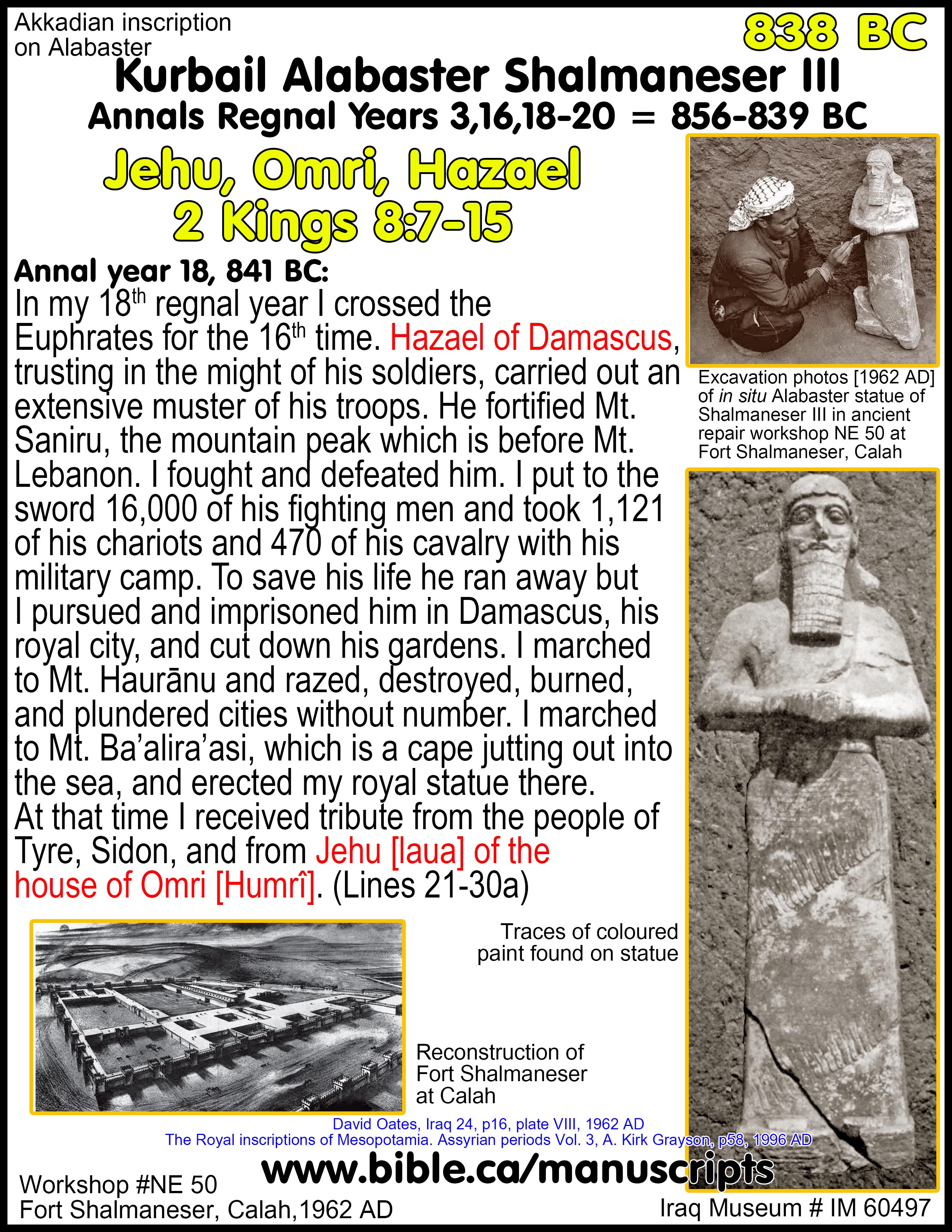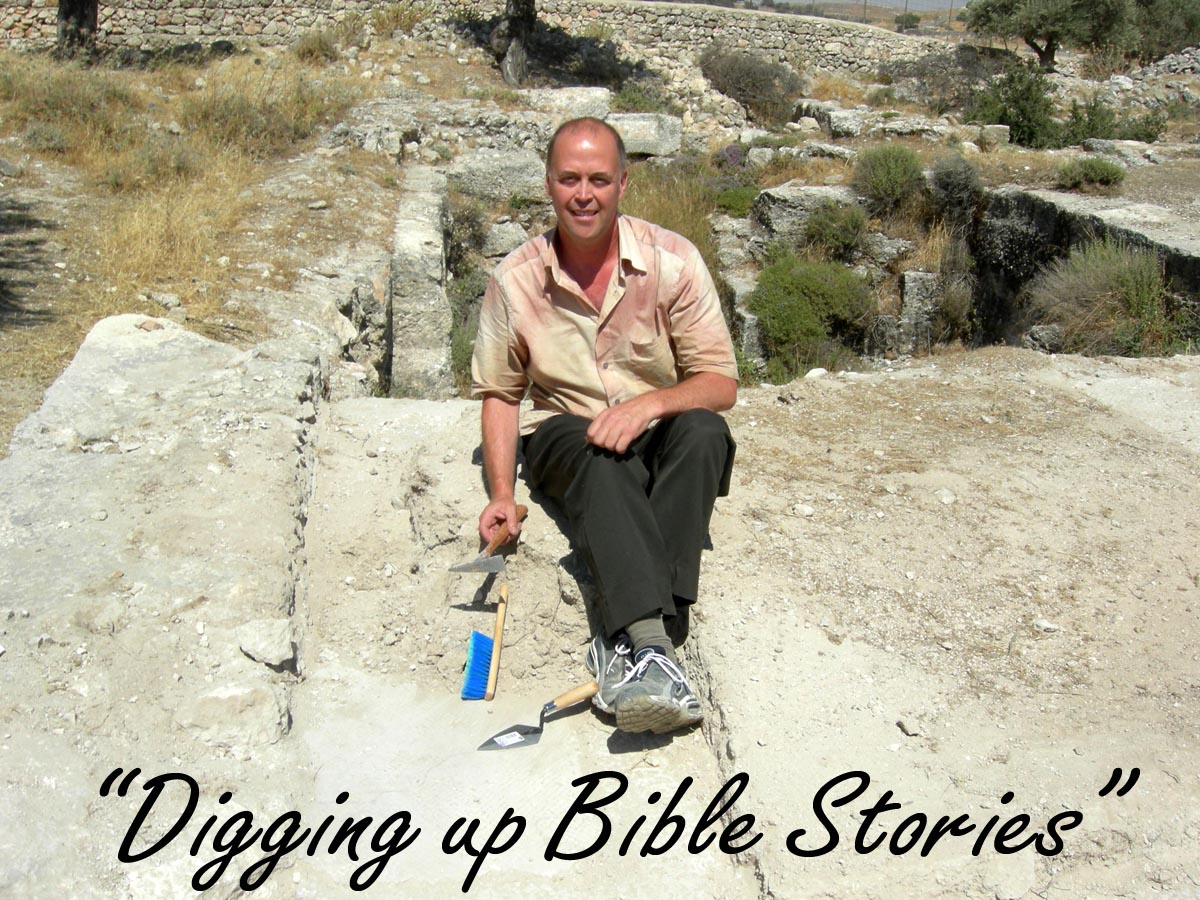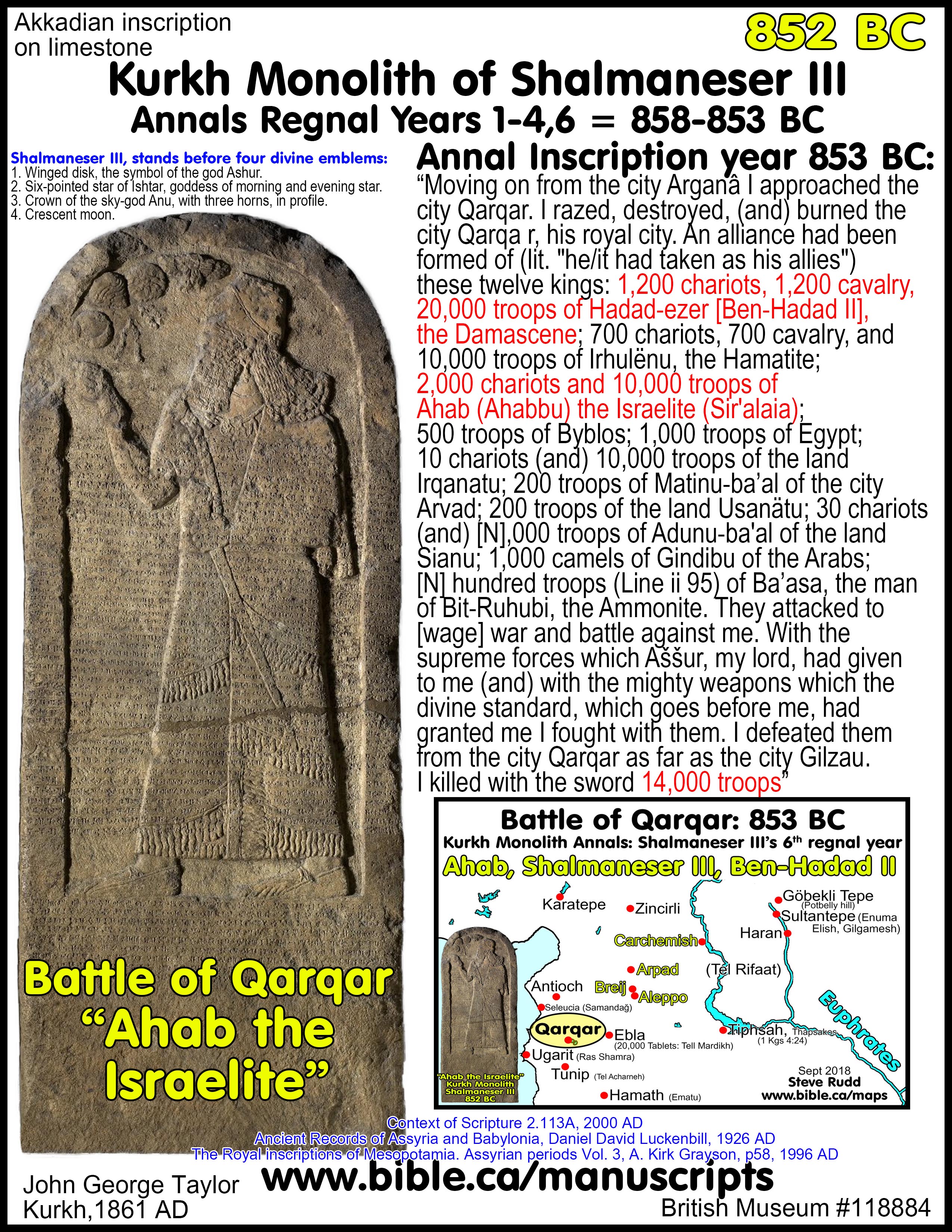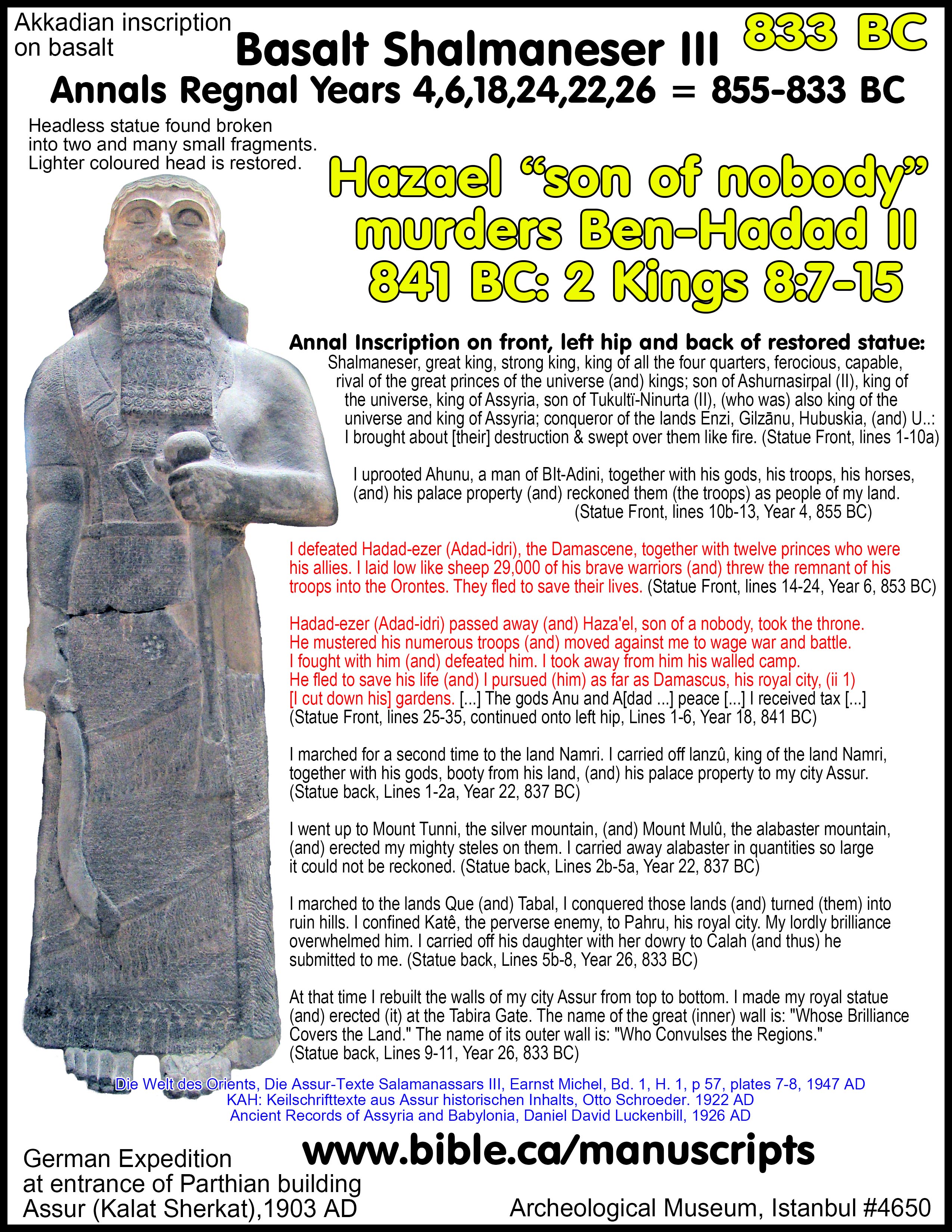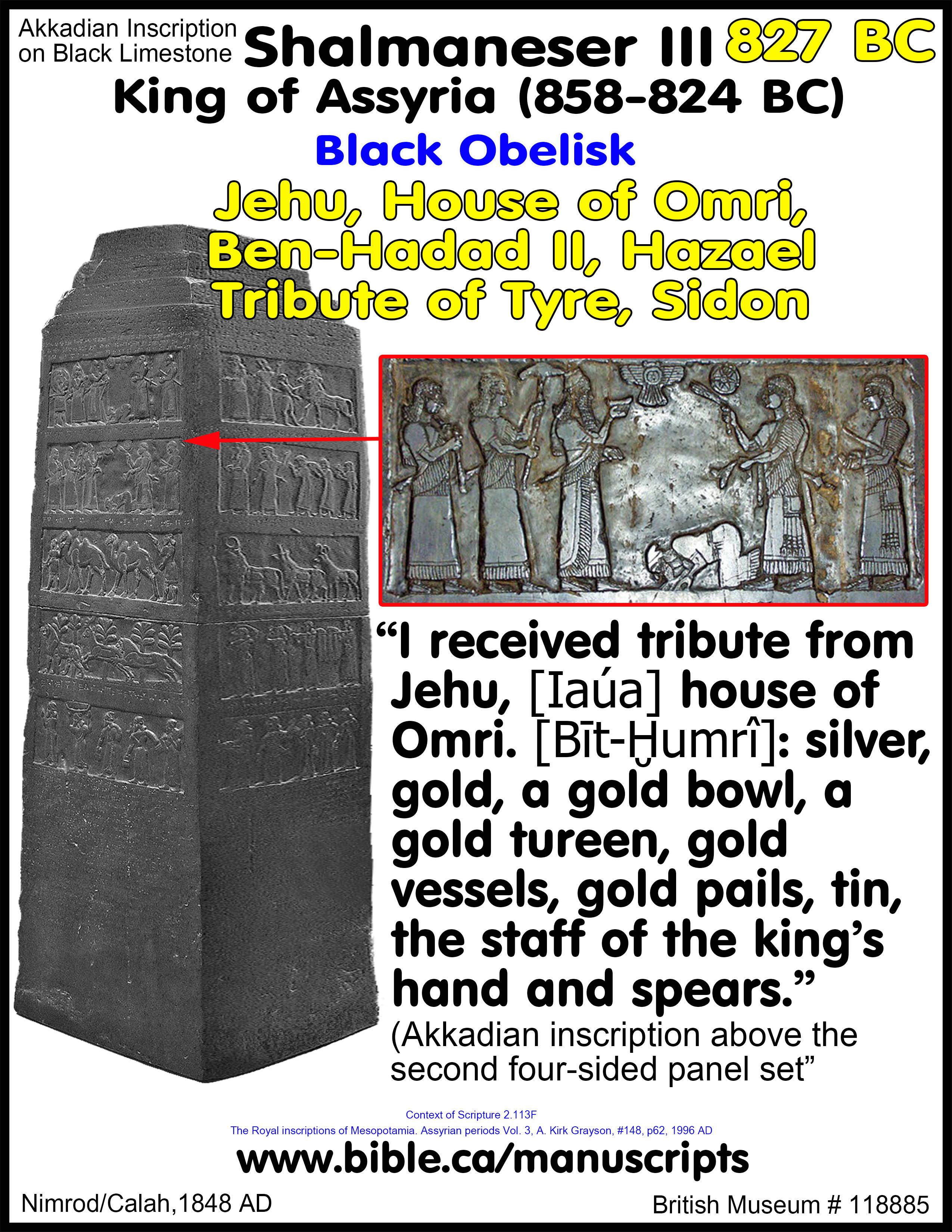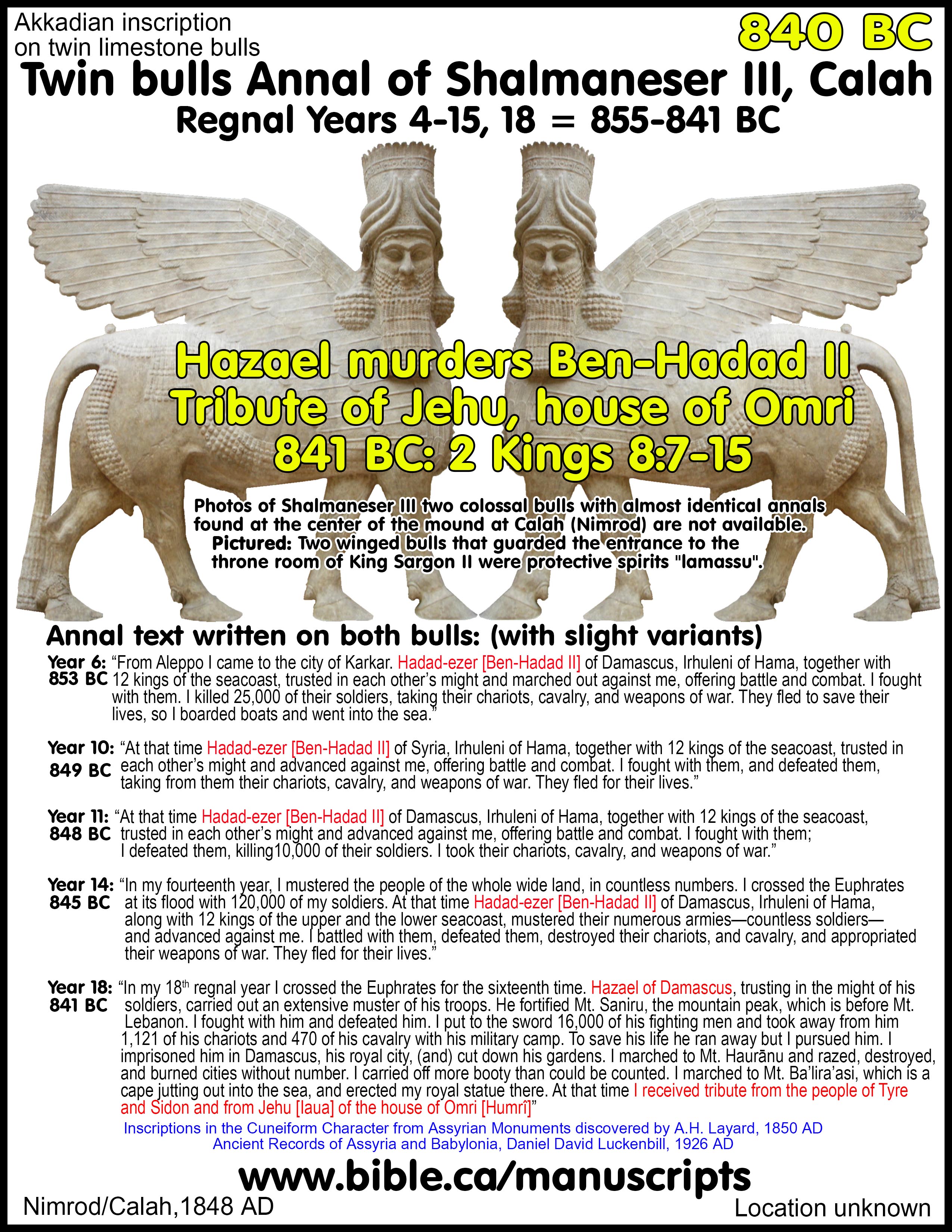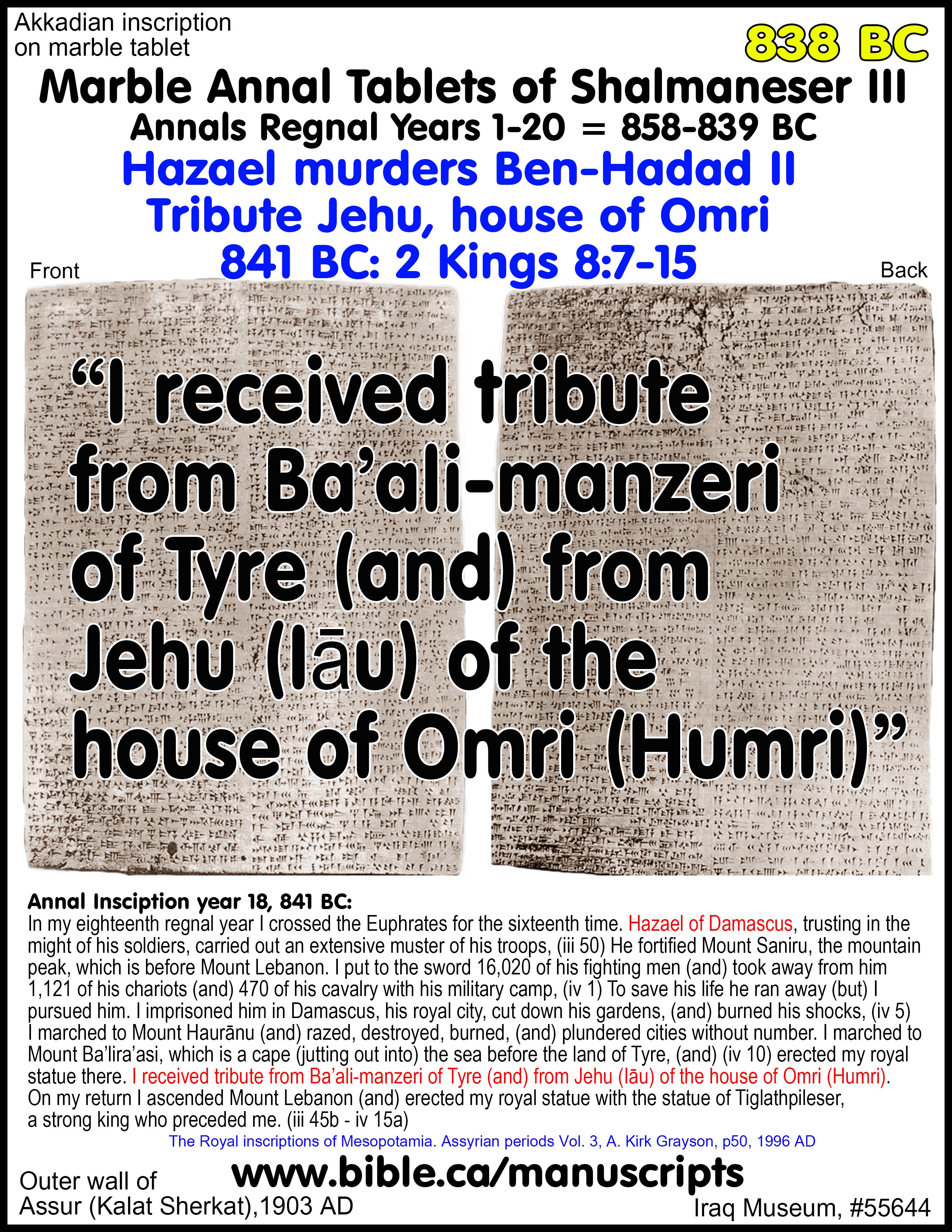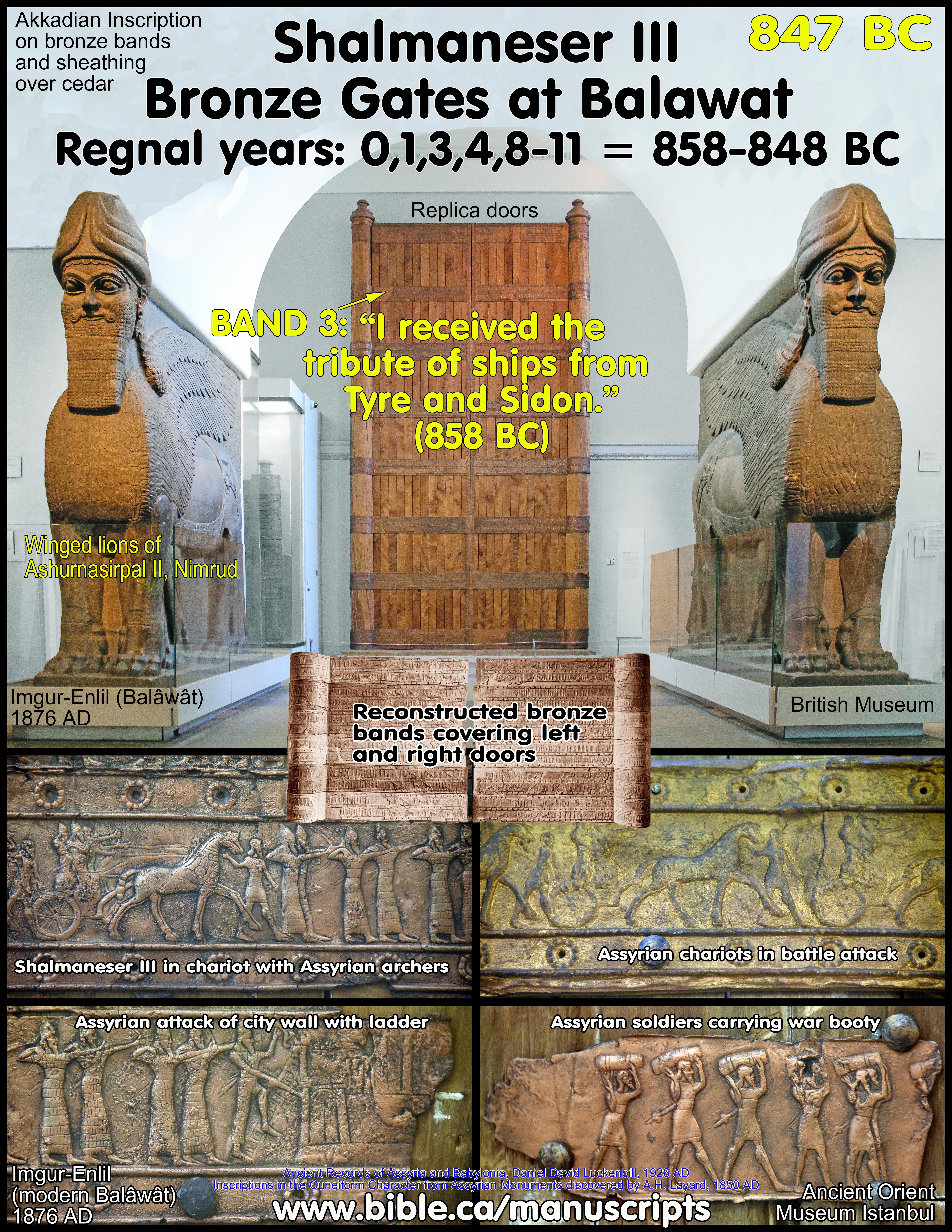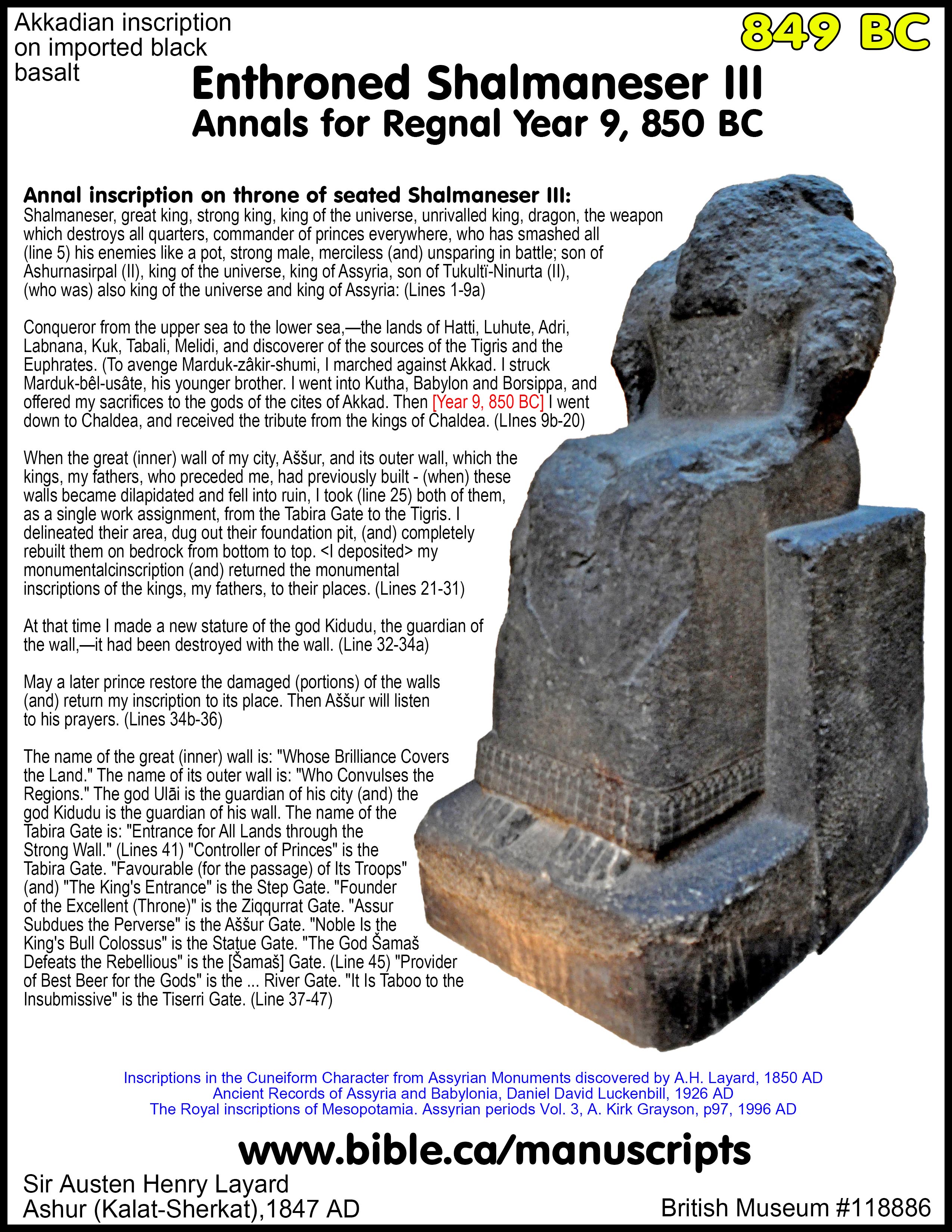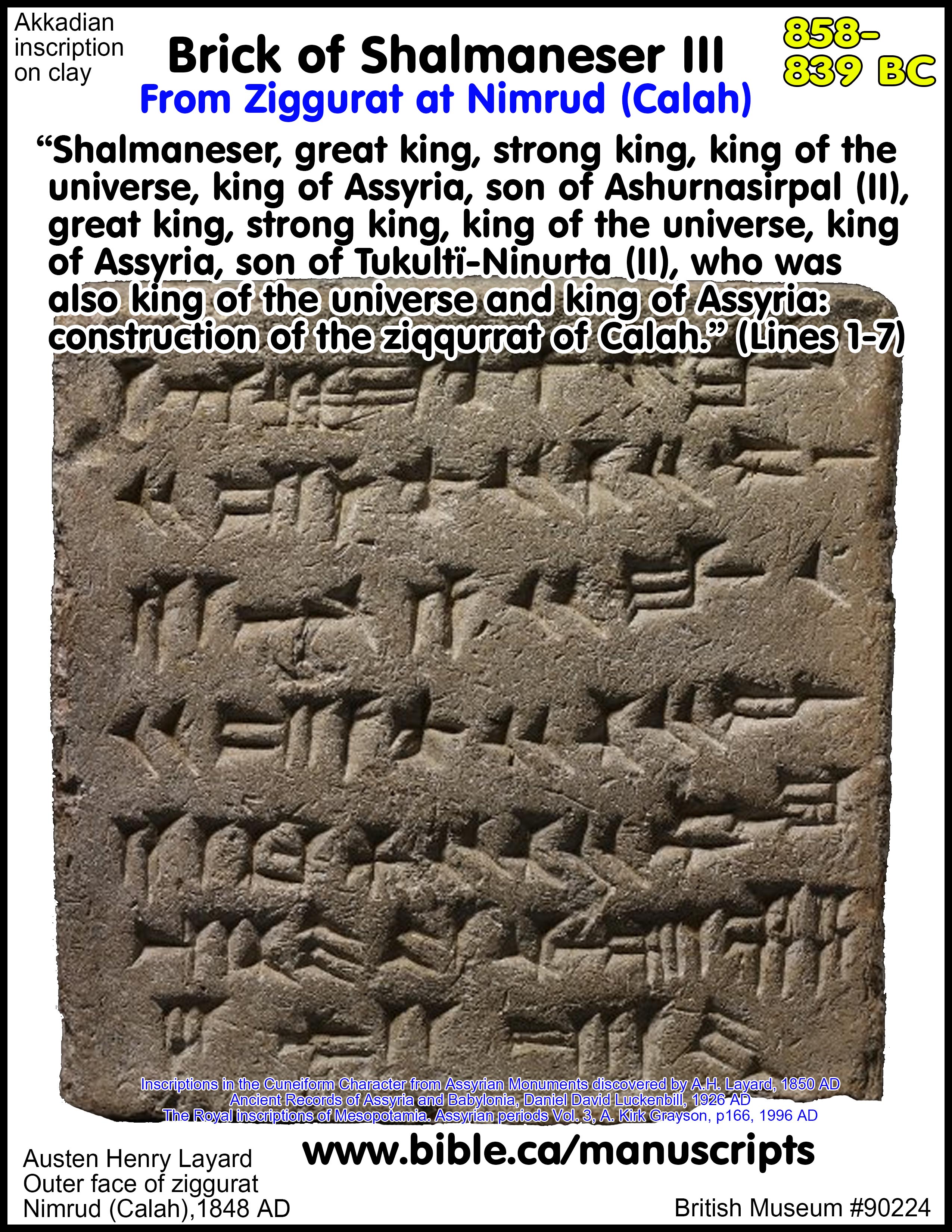Alabaster Statue of Shalmaneser III from Kurbail: 838 BC
Shalmaneser III, King of Assyria 855-841 BC
“Jehu, House of Omri, Hazael, Tyre, Sidon”
See also: Detailed outline on Shalmaneser III
|
Alabaster Statue of Shalmaneser III |
|
|
Date of inscription |
838 BC |
|
Annal years |
856-839 BC (Regnal years 3,16,18-20) |
|
Glyptic object |
Akkadian Inscription on alabaster |
|
Discovery |
Workshop #NE 50, Fort Shalmaneser, Calah,1962 AD |
|
Current location |
Iraq Museum # IM 60497 |
|
Bible names |
Jehu, Omri, Hazael, Tyre, Sidon |
|
Historic events |
One of the six battles between Israel (Ahab, Jehoram and Jehu) and Assyria: It highlights the ongoing battles between Shalmaneser III of Assyria and the coalition of 12 kings under the command of Ben-Hadad II: 1. 841 BC, Year 18: Siege of Damascus |
|
Digging up Bible stories! “In my eighteenth regnal year I crossed the Euphrates for the sixteenth time. Hazael of Damascus, trusting in the might of his soldiers, carried out an extensive muster of his troops. … I fought with him (and) defeated him. I put to the sword 16,000 of his fighting men (and) took away from him 1,121 of his chariots (and) 470 of his cavalry with his military camp. (Lines 25) To save his life he ran away (but) I pursued (him). I imprisoned him in Damascus, his royal city, (and) cut down his gardens. … At that time I received tribute from the people of Tyre, Sidon, (and) from Jehu (laua) of the house of Omri (Humrî). (Lines 21-30a)
“What we read in the book, we find in the ground” |
Introduction:
1. Importance of the Alabaster Statue from Kurbail for Bible students:
a. Most important is the famous reference to King Jehu of the house of king Omri, Hazael
b. The cities of Tyre and Sidon are listed as giving tribute.
2. In 841 BC, Hazael trapped inside Damascus by Shalmaneser III in one of the Six battles with Israel:
a. After meeting with Elisha in 2 kings 8 and being told he will be the new king who will defeat Israel, Hazael decides to attack Syria!
b. The Bible tells us that Hazael killed King Ben-Hadad II.
c. We learn that Hazael took offensive military maneuvers against Assyria and Shalmaneser III counter-attacked Hazael and penned him up inside Damascus in a siege.
d. “Hazael of Damascus, trusting in the might of his soldiers, carried out an extensive muster of his troops. He fortified Mount Saniru, the mountain peak which is before Mount Lebanon. I fought with him (and) defeated him. I put to the sword 16,000 of his fighting men (and) took away from him 1,121 of his chariots (and) 470 of his cavalry with his military camp. (Lines 25) To save his life he ran away (but) I pursued (him). I imprisoned him in Damascus, his royal city, (and) cut down his gardens. I marched to Mount Haurānu (and) razed, destroyed, burned, (and) plundered cities without number. I marched to Mount Ba’alira’asi, which is a cape (jutting out into) the sea, (and) erected my royal statue there. At that time I received tribute from the people of Tyre, Sidon, (and) from Jehu (laua) of the house of Omri (Humrî). (Lines 21-30a)
e. This is the only inscription that specifically says that Hazael was trapped in Damascus as Shalmaneser III attacked it with a siege.
f. This echoes the later Sennacherib annals prism inscription of 689 BC that says, “Hezekiah, I made a prisoner in Jerusalem, his royal residence, like a bird in a cage.” This confirms the story in 2 Kings 18:13.
g. The arrogant confidence of Hazael after meeting Elisha was misplaced.
3. Traces of coloured paint were found on the statue.
4. Sources:
a. David Oates, Iraq 24, p16, plate VIII, 1962 AD
b. The Royal inscriptions of Mesopotamia. Assyrian periods Vol. 3, A. Kirk Grayson, p58, 1996 AD
5. See Detailed outline on Shalmaneser III
I. About the Alabaster Statue from Kurbail: IM 60497
1. “This text is engraved on a statue of Shalmaneser, with traces of coloured paint, which was dedicated to the god Adad of Kurbail, although the statue was actually found at Fort Shalmaneser. The text begins (lines 1-8) with the dedication to Adad, who is given a number of epithets. There follows (lines 9-10) the royal name and genealogy. Then there are passages (lines 11- 36a) describing military campaigns, which conclude with a narrative of the campaign against Que in the twentieth year (839 BC), and the dedication to Adad of Kurbail, tribute brought back from Que. The text ends (lines 36b- 40) with reference to the creation of this statue and the king's prayers for blessings as a reward for presenting the statue. The date of the sculpture must, therefore, be in late 839 BC or 838 BC.” (The Royal inscriptions of Mesopotamia. Assyrian periods Vol. 3, A. Kirk Grayson, p58, 1996 AD)
2. “Commentary: The statue (ND 10000) is in the Iraq Museum (IM 60497). It measures 103 cm high and was discovered in NE 50 leaning against the wall. Despite the break the inscription is virtually undamaged. It has not been collated and the published photos are largely illegible. Some questions raised by this statue deserve consideration. First, although it was dedicated to Adad of Kurbail, it was discovered at Fort Shalmaneser, Calah. The location of Kurbail is still uncertain but it seems to have lain somewhere northwest of Nineveh. The excavator, David Oates, noted that the statue was broken across the bottom left-hand corner and dowel holes had been bored in the opposed faces of the break in order to repair it. The conclusion he drew from this is that the statue had been brought to Fort Shalmaneser for repair. This raises the question: why take it so far for repair since Nineveh, for example, was much closer; and, in any case, why not repair it in the city where it had been erected? Oates suggested that Kurbail had been captured shortly before 614 BC, the year in which Calah fell, and that the statue was damaged in the process but was rescued and taken to Calah. It seems implausible, however, that a fleeing people would have lugged a heavy stone sculpture that far. I wonder, indeed, if the statue had ever been anywhere but in Calah for, as Oates observed, there might have been a shrine of "Adad of Kurbail" at Calah. There was certainly a shrine of "Adad of Kurbail" at Ašsur (see Postgate, RLA 6 p. 368). The next question is the significance of Kurbail in relation to what the inscription narrates. Since the text tells us that booty from Que was dedicated to Adad of Kurbail, there must be a connection. If Kurbail was really somewhere northwest of Nineveh, it could have been a stategic assembly point for campaigns en route to and from destinations, including Que, in that general direction. Perhaps Adad of Kurbail was regarded as responsible for that part of Assyria's geographical horizon. Certainly, Adad of Kurbail was an important god in the Neo-Assyrian period. Another question is the significance of the campaigns mentioned. Within the initial genera! description of Shalmaneser's conquests (lines 11-20), reference to two specific campaigns can be recognized: the third (856 BC) to the northwest (lines 15-18); and the sixteenth (843 BC) to the east (lines 19-20). The dated military narratives are of the following campaigns: eighteenth (841 BC) to the west (lines 21- 30a), nineteenth (840 BC) to the west (lines 30b-31a), and twentieth (839 BC) to the northwest, specifically Que (lines 31b-34). Thus, the whole narrative begins with a broad geographical sweep of Shalmaneser’s conquests, except for Babylonia, ending with a more explicit narrative of recent campaigns to the west and concluding with the first invasion of Que. This initial campaign against Que was apparently a great success (see CAH 3/1 p. 263) and it is not surprising that a statue would have been sculpted to commemorate it.” (The Royal inscriptions of Mesopotamia. Assyrian periods Vol. 3, A. Kirk Grayson, p58, 1996 AD)
3. Map of the land of Que:
a. The invasion of Que (Quean)
b. Que was in Cilicia near Apostle Paul’s home town of Tarsus.
c. The land of Que wrapped around the peninsula of the
north-eastern corner of the Mediterranean sea.
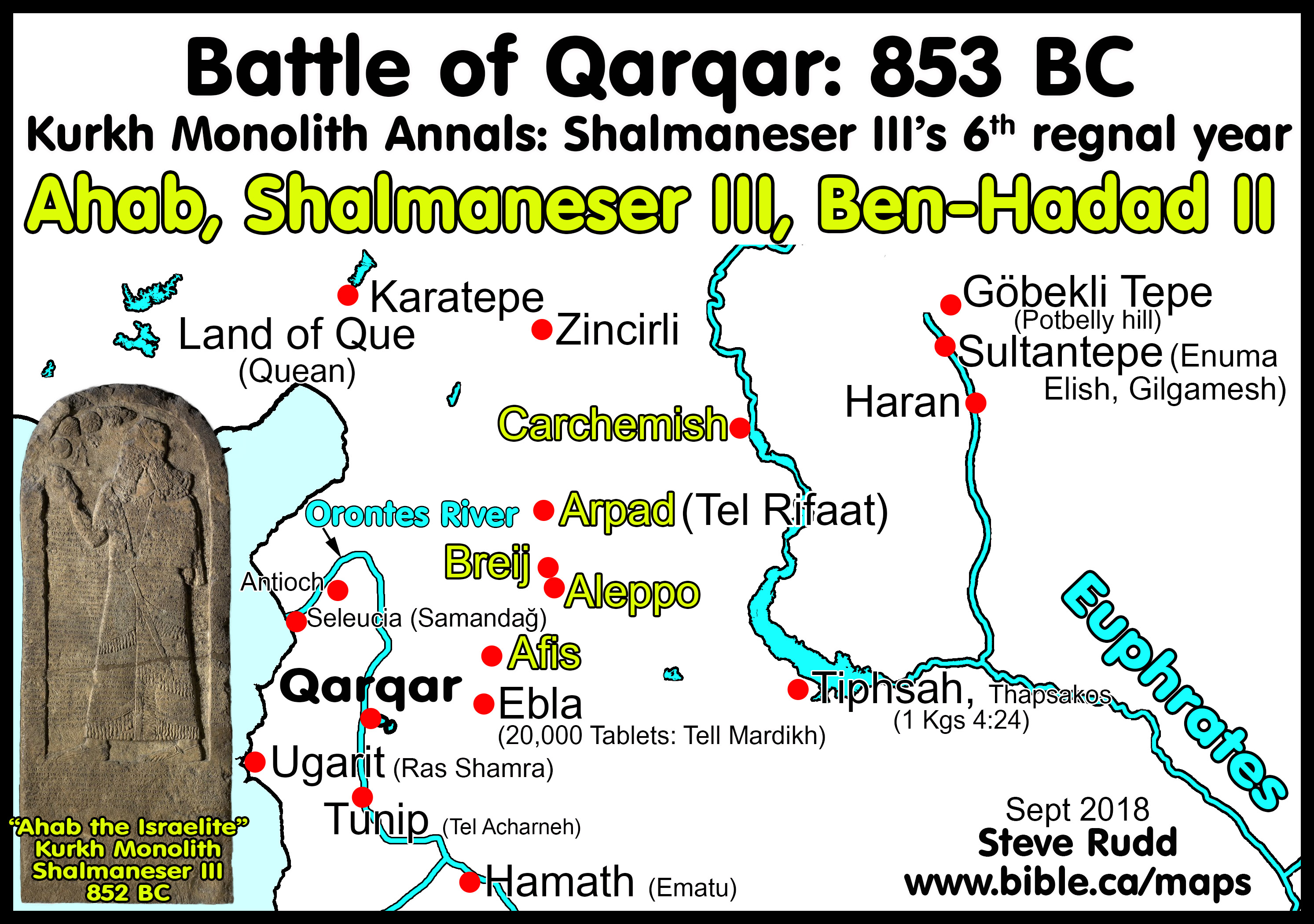
II. Translation of the Alabaster Statue from Kurbail:
|
Date Regnal Year Nisan |
Translated text |
|
Jan 858 BC Year 0 intro |
To the god Adad, canal-inspector of heaven (and) underworld, the lofty, lord of all, almighty among the gods, the awesome (god) whose strength is unrivalled, who bears a holy whip which churns up the seas, who controls all the winds, who provides abundant water, who brings down rain, who makes lightning flash, who creates vegetation, at whose shout the mountains shake (and) the seas are churned up, the compassionate god whose sympathetic concern is life, the one who dwells in the city Kurbail, the holy shrine, the great lord, his lord: (lines 1-8)
Shalmaneser, strong king, governor (appointed by) the great gods, son of Ashurnasirpal (II), king of Assyria, son of Tukultď-Ninurta (II), (who was) also king of Assyria; conqueror from the upper sea to the lower sea of the land Nairi, and the great sea of the west, from Mount Amanus, as far as Mount Lebanon, I gained dominion over all of the land Hatti. (Lines 9-14) |
|
856 BC Year 3 |
I conquered from the source of the Tigris to the source of the Euphrates. I conquered from the land Enzi, the lands Suhni, Melid, Tummu, Daiēnu, Urartu, as far as Arsaskun, the royal city of Aramu, the Urartian. I overwhelmed like a flood the lands Gilzānu (and) Hubuskia. (Lines 15-18) |
|
843 BC Year 16 |
I raged like fire from Mount Kullar as far as the lands Munna, Parsua, Allabria, Abdadānu, Namri, Haban, as far as the land Tuglias. (Lines 19-20) |
|
841 BC Year 18 War with Hazael |
|
|
840 BC Year 19 |
In my nineteenth regnal year I crossed the Euphrates for the twentieth time (and) ascended the Amanus range. I cut down cedar timbers. (Lines 30b-31a) |
|
839 BC Year 20 |
In my twentieth regnal year I crossed the Euphrates for the twenty-first time, crossed over the Amanus range, (and) went down to the cities of Kate, the Quean [Que]. I razed, destroyed, (and) burned the cities without number. I massacred many of them (and) took countless plunder from them. I received his tribute (and) gave it to the god Adad, my lord, for my life, that my days might be long, my years many, (for) the safekeeping of my vice-regal throne, for the scorching of my enemies, for the destruction of my dangerous foes, (and) to subdue at my feet rulers who oppose me. (Lines 31b-36a)
I had made a holy, shining, precious statue of alabaster, the workmanship of which was beautiful to look at (and) the appearance of which was excellent. I erected it before the god Adad, my lord. When the god Adad, my lord, looks upon this statue, may he be truly pleased (and) so command the lengthening of my days, proclaim the multiplication of my years, (and) daily decree the removal of illness from my body. (lines 36b-40) |
Conclusion:
1. The Alabaster Statue from Kurbail of Shalmaneser III is a stunning confirmation of the historical accuracy of the Bible:
a. It names Jehu, Omri, Ben-Hadad II and Hazael
b. It names the cities of Tyre and Sidon
2. The Alabaster Statue also names two other Assyrian kings:
a. Ashurnasirpal (II)
b. son of Tukultď-Ninurta (II)
3. One of six battles between Israel and Assyria: It highlights the ongoing battles between Shalmaneser III of Assyria and the coalition of 12 kings under the command of Ben-Hadad II of Aram (Damascus) which included three Israeli kings: Ahab, Jehoram and Jehu.
a. 841 BC, Year 18: Siege of Damascus
4. What you read in the book, you find in the ground! Find me a church to attend in my home town this Sunday!
|
9 Inscriptions of Shalmaneser III |
||
|
|
|
|
|
|
|
|
By Steve Rudd: Contact the author for comments, input or corrections.
